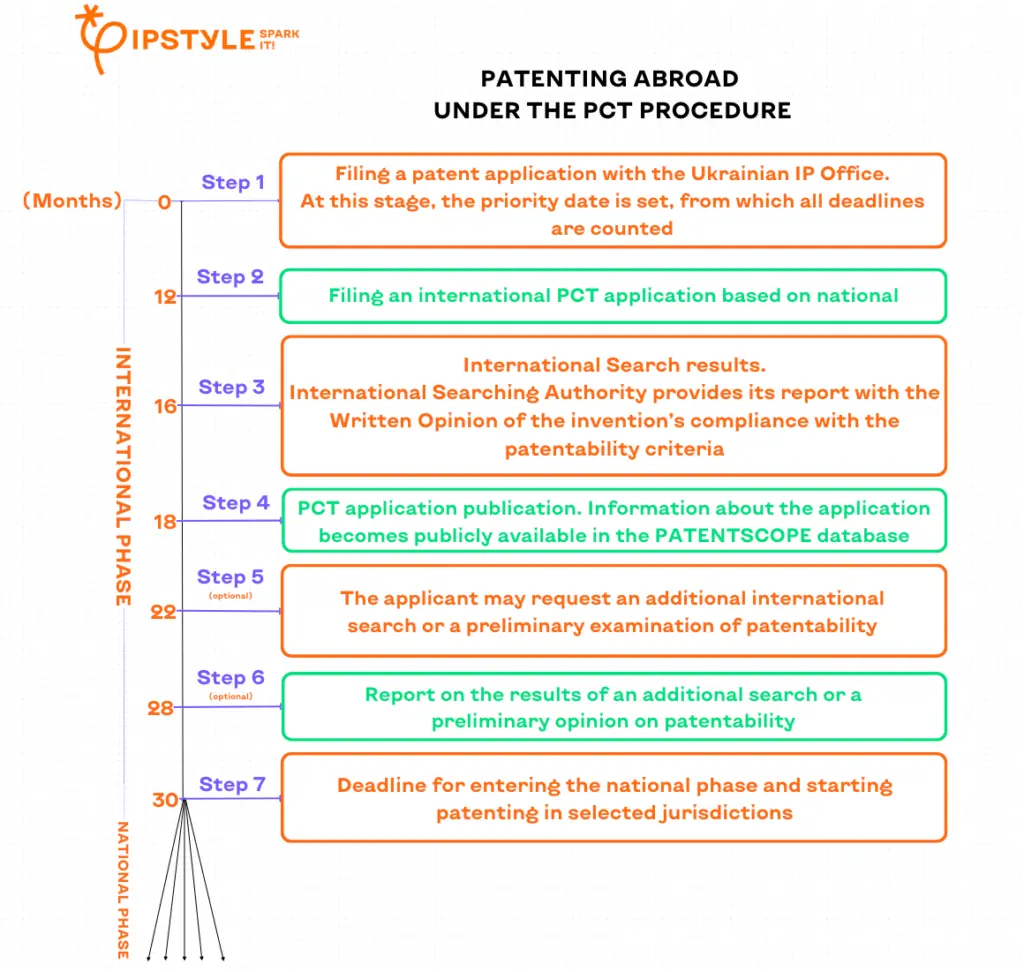IP registration provides various benefits for the creator and helps to their rights of founders as well as to attract investors. Moreover, in some countries, such as the USA or China with a large number of consumers and investors interested in technical or technological solutions, it is almost impossible to “sell” an innovation unless it is patented. Or it costs less than a similar patented one. Nobody wants to invest in a product that can be easily copied.
First of all, you should remember that patents are territorial rights. In general, the exclusive rights are only applicable in the country or region in which a patent has been filed and granted. If a company has patented an innovation in Ukraine, the rights are protected in Ukraine. Don't rush to discover it to the globe. You should protect it before in the countries you are interested. Unfortunately, there is no such thing as an “international patent”. However, there are several ways to obtain a patent in several countries at the same time and at the lowest cost. The PCT patent procedure is one of them.
What is PCT?
The PCT is an international Patent Cooperation Treaty (PCT) which makes possible a streamlined and unified procedure for filing patent applications in 157 countries. This abbreviation is also usually used to refer to international patent applications themselves, administered by the World Intellectual Property Organization (WIPO). This allows to multiple national application in each of the contracting countries designated in the patent application. Also provides a online platform for international patent searches.
International protection of intellectual property under the PCT provides for the registration and publication of an international application (international phase of patenting) and national patenting in the countries of interest (national phase). The PCT procedure is considered the simplest and most profitable.
To understand the PCT better, let's compare it to the classic patenting process. It takes place in two stages. At the first stage, a company or group of applicants or inventors submits the first (basic) application in the country of residence. For examples, in Ukraine. The second stage - within 12 months from the date of filing the basic application, submits applications to the remaining countries of interest.
The time is running out quickly and deadline can be missed but foreign patenting budgets are quite high. Then the startup is deprived of the right to claim priority, and the novelty is also lost. In this case we miss an opportunity to patent in other countries and are left with one patent application or a patent that is valid only in Ukraine. We are losing prospects to attract investors and enter international markets.
So what to do? The tool and the answer are surprisingly very simple - to file a PCT application.

That is, compared to the classic patenting process, an intermediate stage is added - filing a PCT application within the 12-month period from the date of filing the base one. After the expiration of 18 months from the earliest filing date (priority date) WIPO publishes a preliminary opinion on its website, and after 30 months it sends the opinion to the national offices where applicant seeks protection. Time is on your side.
PCT advantages
The most obvious advantage is the 2.5 years to file applications in countries of interest, compared to 12 months for the classic patent process. Startups often operate on a tight schedule and the fast pace of work. Thats why an additional 1.5 years is a very significant time to attract investors and investments, distribute the budget for patenting over time and determine priority protection territories and markets.
This is also budget optimization, because we file one application, we pay one fee and as a result we receive a kind of “reservation” to defer patenting in 157 countries.
At the same time, PCT is a common and well-known route, especially among investors, funds and accelerators. After the expiration of 18 months from the earliest filing date, the content of your international application is disclosed to the world. WIPO publishes the PCT patent application in the PATENTSCOPE, a global patent database and search system where international investors and potential partners learn about us. This means you protect your innovation or invention which also satisfy the following three criteria for patenting: novelty, industrial applicability and inventive step. So they can do business with you.
If we are talking about novelty, industrial applicability and inventive step, it would be valuable or useful to bear in mind that each patent application should be reviewed for compliance with every three criteria.
WIPO will issue a preliminary report on patentability. For startups, such a report is always a source of information for further decisions. If the output is 100% positive, all doors are open. If there are inconsistencies with the criteria in part of the application, it should be corrected and will help to save money during the process as well as avoid unwanted requests.
If the application does not completely meet the criterion of inventive step, in order not to take risks, you can simply submit an application for patenting utility models (inventive step is not required) in those countries where its available.
Another important element at the growth stage is marketing. After filing a PCT application, a startup gets the opportunity to communicate about its product or technology and use the phrase “patent pending.” It means that you have currently filed a patent application and it is under consideration.
On the one hand, this will help warn competitors that the startup is protecting its IP portfolio, and the other hand - it will help to increase the positive image for clients, users, investors, ect.
To order an individual strategy for patenting your product or technology, contact us at office@ipstyle.ua or Telegram chat @ipstyle_innovation. We believe in the success of our clients’ innovations and are always happy to support with our expertise for the grouth and commercialization.
